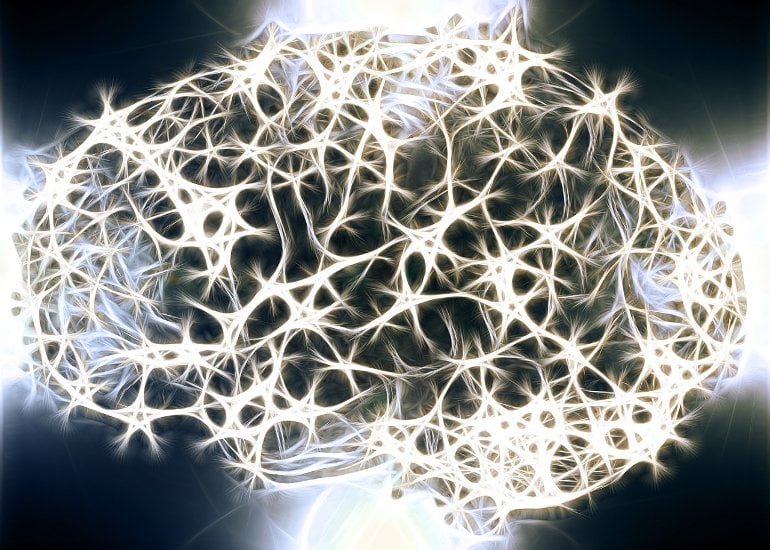Summary: Fatigue is a common symptom associated with multiple sclerosis, affecting up to 99% of patients. Researchers report light box therapy helped measurably improve symptoms of fatigue in those with MS after 14 days.
Source: Medical University of Vienna
Multiple sclerosis (MS) is almost always accompanied by fatigue, a massive tiredness that is described by the vast majority of patients as the most distressing symptom.
In a recent study, a research group led by Stefan Seidel from the Department of Neurology at MedUni Vienna and AKH Vienna identified light therapy as a promising non-drug treatment option: patients included in the study showed a measurable improvement after just 14 days of use.
The study results were recently published in the Multiple Sclerosis Journal—Experimental, Translational and Clinical.
For the first time, Stefan Seidel’s research team relied not only on surveys but also on objective measurements when selecting the test persons. For example, sleep-wake disorders were ruled out in the 26 participating MS patients, particularly with the assistance of various sleep medicine examinations.
“In this manner, for example, we ensured that MS patients with fatigue do not suffer from sleep apnea or periodic leg movements during sleep. Both are sleep disorders that can lead to fatigue in everyday life,” elaborated study leader Stefan Seidel.
Performance improvement
The test persons—all patients of the Neurology Department at MedUni Vienna and AKH Vienna—were equipped with commercially available light sources for self-testing at home: Half of the participants received a daylight lamp with a brightness of 10,000 lux, while the other half received an identical lamp that emitted a red light with an intensity of <300 lux due to a filter.
While the red light used by the control group showed no effect, the researchers were able to observe measurable successes in the other group after only 14 days: The participants who used their 10,000 lux daylight lamp for half an hour every day showed improved physical and mental performance after only a short period of time. In addition, the group of participants who had consumed bright light displayed less daytime sleepiness in comparison with the other group.
Up to 99% of patients
Fatigue is a severe form of tiredness and fatigability that occurs in 75% to 99% of people with MS and is described as particularly distressing. Nerve damage triggered by MS is being discussed as the cause.

In addition to behavioral measures, such as regular rest breaks, various medications are currently available to alleviate fatigue, but some of these are associated with severe side effects.
“The findings from our study represent a promising non-drug therapeutic approach,” Stefan Seidel affirms. However, the results still need to be confirmed in a subsequent larger-scale study. The exact background of the invigorating effect of light therapy on MS patients will also be the subject of further scientific research.
About this multiple sclerosis research news
Author: Press Office
Source: Medical University of Vienna
Contact: Press Office – Medical University of Vienna
Image: The image is in the public domain
Original Research: Open access.
“Bright light therapy as a non-pharmacological treatment option for multiple sclerosis-related fatigue: A randomized sham-controlled trial” by Lisa Voggenberger et al. Multiple Sclerosis Journal—Experimental, Translational and Clinical
Abstract
Bright light therapy as a non-pharmacological treatment option for multiple sclerosis-related fatigue: A randomized sham-controlled trial
Background
Fatigue is a common symptom in people with multiple sclerosis (pwMS) that significantly impairs quality of life. Bright light therapy may be a cheap treatment option with little to no adverse events.
Objectives
To evaluate the effectiveness of bright light therapy as a treatment option for MS-related fatigue.
Methods
This was randomized sham-controlled trial including 26 pwMS with a Fatigue Severity Scale (FSS) Score ≥36. Participants were assigned to receive either bright white light therapy (n = 13) or dim red light (sham-intervention; n = 13). Participants used the respective intervention for 30 min each morning for two weeks, followed by a two-week washout period. The primary endpoint was the difference in FSS scores following light treatment as calculated by analysis of covariance.
Results
There was no significant difference in FSS (F(1,23) = 2.39, p = .136, partial ⴄ2 = .094). However, FSS scores generally improved over the course of the study in a clinically relevant manner.
Conclusion
Bright light therapy decreased FSS scores over the course of this study. However, this effect was not significant in comparison to a sham intervention.







